Food
Feast East Buffet Restaurant Singapore Premier Asian Dining
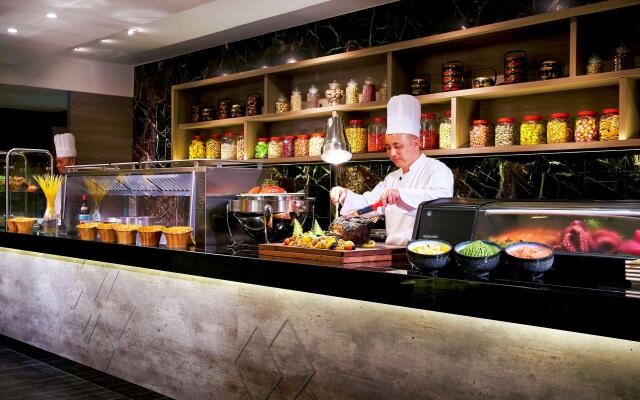
Singapore’s dining landscape has always been a melting pot of flavors, cultures, and culinary traditions. Among the feast east buffet restaurant offerings, buffet dining continues to capture the hearts of food enthusiasts seeking variety, quality, and value. When it comes to exceptional Asian buffet dining, one establishment stands out from the crowd, offering an unparalleled gastronomic experience that celebrates the rich tapestry of Asian cuisine.
The concept of all-you-can-eat dining has evolved significantly over the years, transforming from simple food stations to sophisticated culinary experiences. Today’s discerning diners expect more than just quantity; they demand quality, authenticity, and an atmosphere that enhances their dining journey. This is precisely where the modern buffet restaurant excels, creating spaces that bring families together while satisfying diverse palates and dietary preferences.
The Rise of Asian Buffet Dining in Singapore
Singapore’s multicultural society has naturally fostered a deep appreciation for diverse Asian cuisines. From traditional Chinese delicacies to spicy Thai curries, from Japanese sushi to Korean barbecue, the island nation has become a haven for food lovers seeking authentic flavors from across the continent. This cultural diversity has created a perfect environment for Asian buffet dining to flourish.
The appeal of buffet-style dining extends beyond mere convenience. It offers diners the opportunity to explore unfamiliar dishes, sample multiple cuisines in a single meal, and enjoy the social aspect of sharing food experiences with family and friends. For many Singaporeans and visitors alike, a visit to a quality buffet restaurant represents more than just a meal; it’s a cultural exploration and social gathering rolled into one.
What Makes a Singapore Buffet Restaurant Exceptional
Several factors distinguish outstanding buffet restaurants from ordinary dining establishments. First and foremost is the quality and freshness of ingredients. The best buffet experiences prioritize sourcing premium ingredients and maintaining strict food safety standards. This commitment to quality is evident in everything from the selection of seafood to the preparation of traditional dishes.

Variety represents another crucial element. A truly exceptional buffet offers an extensive range of cuisines, cooking styles, and flavor profiles. This diversity ensures that every diner, regardless of their preferences or dietary restrictions, can find something to enjoy. From mild, family-friendly options to bold, adventurous flavors, the best buffets cater to all taste preferences.
The dining environment plays an equally important role. Successful buffet restaurants create atmospheres that encourage relaxation and social interaction. Comfortable seating arrangements, appropriate lighting, and efficient service all contribute to an enjoyable dining experience that keeps customers returning.
Family-Friendly Buffet Dining Experience
Modern families often struggle to find dining options that satisfy multiple generations and varying taste preferences. A well-designed family-friendly buffet addresses this challenge by offering something for everyone. Children can enjoy familiar favorites while adults explore more sophisticated dishes, and elderly family members can find comfort foods that remind them of home.
The social aspect of buffet dining particularly appeals to families. Unlike traditional restaurant dining, where individuals order separate dishes, buffet dining encourages sharing experiences and trying new foods together. This communal approach to dining strengthens family bonds and creates lasting memories around food and conversation.
Safety and hygiene considerations have become increasingly important for families choosing dining venues. The best buffet restaurants implement comprehensive safety protocols, maintain pristine serving areas, and regularly refresh food stations to ensure optimal freshness and safety for all diners.
Seafood Buffet Singapore: Ocean-Fresh Delicacies
Singapore’s strategic location as a maritime hub provides exceptional access to fresh seafood from across the region. This geographical advantage allows top-tier buffet restaurants to offer an impressive array of ocean-fresh delicacies that showcase the natural flavors of premium seafood.
A quality seafood buffet Singapore experience typically features multiple preparation styles for each type of seafood. Fresh fish might be offered grilled, steamed, or prepared in traditional Asian sauces. Shellfish selections often include both cooked preparations and fresh options, allowing diners to experience the pure, natural flavors of the ocean.

The presentation of seafood at buffet restaurants has evolved into an art form. Ice displays, elegant serving vessels, and attractive garnishes transform simple seafood stations into impressive culinary showcases that enhance the overall dining experience while maintaining optimal freshness and temperature.
Halal Buffet Options: Inclusive Dining for All
Singapore’s diverse religious landscape has created a strong demand for halal buffet options that allow Muslim diners to enjoy the buffet experience without compromising their dietary requirements. Forward-thinking buffet restaurants have responded to this need by obtaining halal certifications and developing extensive menus that comply with Islamic dietary laws.
Creating authentic halal buffet options requires more than simply avoiding prohibited ingredients. It involves understanding the cultural preferences and traditional cooking methods that resonate with Muslim diners while maintaining the variety and quality expected from premium buffet dining.
The best halal buffet experiences offer the same level of culinary diversity and sophistication found in traditional buffets while ensuring complete compliance with halal standards. This inclusivity allows Muslim families and individuals to fully participate in Singapore’s vibrant dining culture.
Affordable Buffet Meals Without Compromising Quality
Value remains a primary consideration for many diners when choosing buffet restaurants. However, affordable doesn’t necessarily mean compromising on quality or variety. The most successful buffet restaurants achieve this balance by focusing on efficient operations, strategic sourcing, and creating dining experiences that offer exceptional value for money.
Affordable buffet meals succeed when they provide diners with access to premium ingredients and diverse cuisines at prices significantly lower than ordering equivalent dishes à la carte. This value proposition becomes particularly attractive for families and groups seeking to enjoy special dining experiences without breaking their budgets.
Smart buffet operators achieve affordability through economies of scale, efficient kitchen operations, and strategic menu planning that maximizes both variety and cost-effectiveness. These operational efficiencies allow them to pass savings on to customers while maintaining high standards for food quality and service.
All-You-Can-Eat Asian Cuisine: A Culinary Adventure
The concept of all-you-can-eat Asian cuisine transforms dining from a simple meal into a culinary adventure. This approach allows diners to explore the vast diversity of Asian cooking traditions, from the delicate flavors of Cantonese cuisine to the bold spices of Southeast Asian dishes.
A comprehensive all-you-can-eat Asian cuisine experience typically encompasses multiple countries and cooking traditions. Diners might sample Japanese teriyaki alongside Thai curry, or enjoy Korean kimchi with Chinese dim sum. This diversity creates opportunities for cultural exploration and flavor discovery that would be impossible in traditional single-cuisine restaurants.
The educational aspect of diverse Asian buffets shouldn’t be overlooked. Many diners use these experiences to learn about unfamiliar cuisines, discover new favorite dishes, and develop a deeper appreciation for Asian culinary traditions. This cultural exchange through food represents one of the most rewarding aspects of comprehensive Asian buffet dining.
Local Buffet Dining Experience: Connecting with Singapore’s Food Culture
Singapore’s unique position as a cultural crossroads has created a distinctive local dining culture that blends influences from across Asia with international elements. The best local buffet dining experience captures this multicultural essence while celebrating the specific flavors and traditions that make Singaporean cuisine unique.
Local buffet restaurants often feature dishes that reflect Singapore’s cultural diversity, including Chinese-Malay fusion dishes, Indian-influenced curries, and Peranakan specialties that can’t be found elsewhere. These local specialties provide diners with authentic tastes of Singapore’s culinary heritage.

The atmosphere of local buffet dining typically reflects Singapore’s relaxed, multicultural society. Families from different backgrounds share tables, children play together, and conversations flow in multiple languages, creating an authentic local dining atmosphere that visitors and residents alike find welcoming and inclusive.
Feast East Food Variety: Setting New Standards
When evaluating any buffet restaurant, the variety and quality of food offerings serve as primary indicators of the establishment’s commitment to excellence. A truly exceptional buffet provides not just numerous options, but carefully curated selections that represent the best of their respective culinary traditions.
Quality buffet restaurants invest significant resources in maintaining diverse, fresh food stations throughout service periods. This commitment requires sophisticated kitchen operations, experienced culinary teams, and efficient logistics to ensure that every dish meets high standards regardless of when diners arrive.
The presentation and rotation of food items also distinguish exceptional buffets from average ones. Premium establishments regularly refresh serving stations, maintain optimal temperatures, and present dishes in ways that enhance their visual appeal while preserving their flavors and textures.
Frequently Asked Questions
What types of cuisine are typically available at Asian buffet restaurants?
Asian buffet restaurants usually offer a diverse range of cuisines including Chinese, Japanese, Thai, Korean, Malaysian, Indian, and fusion dishes. Many also include international options and local Singaporean specialties to cater to diverse preferences.
Are there vegetarian and vegan options available at most buffets?
Yes, most quality buffet restaurants provide extensive vegetarian options and many now offer vegan dishes as well. These typically include fresh vegetables, tofu preparations, rice dishes, and plant-based protein alternatives.
How do buffet restaurants ensure food safety and freshness?
Reputable buffet restaurants implement strict food safety protocols including regular temperature monitoring, frequent food rotation, covered serving stations, and trained staff who maintain hygiene standards throughout service periods.
What should families with young children expect at buffet restaurants?
Family-friendly buffets typically offer high chairs, child-appropriate utensils, mild food options that appeal to children, and often provide special pricing for kids. Many also feature spacious seating arrangements to accommodate families comfortably.
Do most buffet restaurants accommodate special dietary requirements?
Many modern buffet restaurants accommodate various dietary requirements including halal, kosher, gluten-free, and allergy-specific needs. It’s recommended to contact the restaurant in advance to discuss specific requirements.
What’s the typical price range for quality buffet dining in Singapore?
Buffet prices in Singapore vary significantly based on location, cuisine variety, and meal period. Lunch buffets are typically more affordable than dinner service, with prices ranging from budget-friendly to premium depending on the establishment’s positioning.
How far in advance should reservations be made for popular buffet restaurants?
Reservation requirements vary by restaurant and day of the week. Weekend dining and special occasions typically require advance booking, while weekday meals may offer more flexibility. It’s advisable to check specific restaurant policies.
Are there time limits for buffet dining?
Most buffet restaurants implement time limits, typically ranging from 90 minutes to 2 hours, to manage seating capacity effectively. These limits are usually clearly communicated during reservation or upon arrival.
Conclusion
The landscape of buffet dining in Singapore continues to evolve, driven by rising expectations for quality, variety, and value. The most successful establishments recognize that modern diners seek more than just unlimited food; they want authentic flavors, cultural experiences, and social environments that bring people together.
Whether you’re a local resident exploring your city’s culinary offerings or a visitor seeking to experience Singapore’s diverse food culture, choosing the right buffet restaurant can transform a simple meal into a memorable cultural journey. The best buffet experiences combine exceptional food variety with outstanding service, creating dining adventures that satisfy both the palate and the soul.
The future of buffet dining lies in establishments that can successfully balance tradition with innovation, offering authentic Asian flavors while adapting to changing dietary preferences and social expectations. Those restaurants that master this balance will continue to thrive in Singapore’s competitive dining landscape, providing memorable experiences that keep families and food lovers coming back for more.
Food
Yi Dian Dian Bubble Tea Singapore: Menu, Outlets & Try Drinks
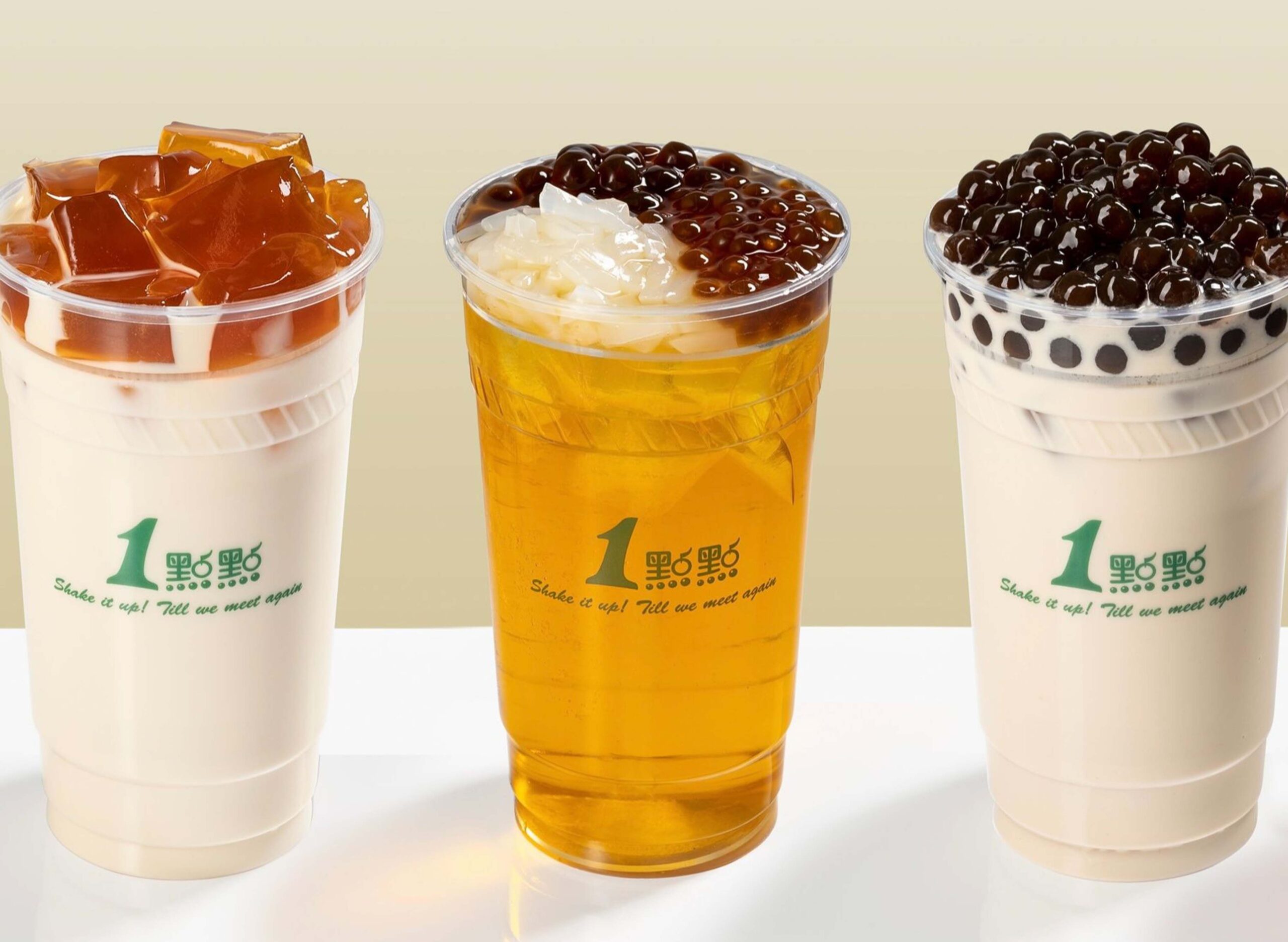
Bubble tea in Singapore isn’t just a drink—it’s a lifestyle. Among the many brands popping up across the island, Yi Dian Dian Bubble Tea stands out for its authentic flavors, quality ingredients, and balanced sweetness that lives up to its name (“Yi Dian Dian” literally means “just a little bit”). Whether you’re a fan of brown sugar milk tea, tapioca pearls, or fruity blends, Yi Dian Dian has something for every taste bud.
What Makes Yi Dian Dian Bubble Tea Special?
Yi Dian Dian’s charm lies in simplicity. It doesn’t try to reinvent bubble tea but focuses on perfecting the basics—smooth tea, chewy pearls, and just the right amount of sugar. Customers love that it offers control over sweetness and ice levels, giving everyone a personalized experience. Every drink feels consistent, no matter which Yi Dian Dian outlet you visit in Singapore. The brand’s tapioca pearls are soft yet bouncy, never soggy or overly sweet. Their brown sugar milk series has become a cult favorite for its caramel aroma and creamy texture. Meanwhile, tea lovers swear by the golden oolong and classic milk tea, which hit the right balance between fragrance and flavor.
Yi Dian Dian Bubble Tea Menu
The Yi Dian Dian bubble tea menu is known for its wide range of tea bases, milk options, and fun toppings. Here’s what you can expect when browsing the Yi Dian Dian menu Singapore:
Signature Milk Teas
Classic Milk Tea – A smooth blend of black tea and creamy milk. Brown Sugar Milk Tea – Sweetened with rich brown sugar syrup and chewy pearls. Oolong Milk Tea – Fragrant and slightly roasted flavor that pairs well with milk foam. Taro Milk Tea – Sweet and earthy, perfect for dessert lovers.
Fruit Tea Series
Passion Fruit Green Tea – Refreshing with a tangy twist. Peach Oolong Tea – Fragrant oolong base with a gentle fruit note. Lemon Black Tea – Great for a citrusy punch on hot afternoons. Mango Green Tea – Tropical and light with natural sweetness.
Brown Sugar Series
Brown Sugar Pearl Milk – Thick, creamy, and filled with warm brown sugar pearls. Brown Sugar Matcha Latte – A Japanese twist with a caramelized touch. Brown Sugar Fresh Milk with Cream Foam – Rich and velvety, best served less sweet.
Milk Foam Teas
Golden Oolong Milk Foam Tea – Slightly floral tea topped with a salty-sweet foam. Black Tea Milk Foam – Balanced, smooth, and satisfying for milk tea purists.
Specialty & Recommended Drinks
The Yi Dian Dian recommended drinks include their Signature Brown Sugar Milk Tea, Golden Oolong Milk Foam, and Peach Oolong Fruit Tea. Each drink has a unique charm that caters to different moods—whether you’re craving something creamy, floral, or refreshing.
Yi Dian Dian Bubble Tea Price in Singapore
The Yi Dian Dian bubble tea price varies slightly by outlet, but most drinks range between $3.50 to $6.50 depending on size and toppings. Brown sugar milk teas and specialty drinks are usually at the higher end due to the premium ingredients. The Yi Dian Dian menu prices remain competitive, offering great value compared to other popular brands in Singapore’s bubble tea scene.
Yi Dian Dian Outlets and Store Locations
Yi Dian Dian has multiple outlets across Singapore, making it easy to grab your favorite drink wherever you are. Popular Yi Dian Dian branch locations include Yi Dian Dian Bugis Junction, Yi Dian Dian Tampines 1, Yi Dian Dian Nex Serangoon, Yi Dian Dian Chinatown Point, Yi Dian Dian Jurong Point, and Yi Dian Dian Northpoint City (Yishun). Each outlet maintains the same level of consistency and freshness. The Yi Dian Dian opening hours generally range from 11 AM to 10 PM, but timings can differ by location. If you’re unsure where to find one near you, simply search “Yi Dian Dian near me” on Google Maps or GrabFood to locate the closest store.
Yi Dian Dian Delivery and Online Orders
Craving bubble tea at home? Yi Dian Dian offers delivery through major food platforms like GrabFood, Foodpanda, and Deliveroo. Just type “Yi Dian Dian order online” or check their app listings. The Yi Dian Dian delivery menu includes their full range of drinks, so you won’t miss out on your favorite combinations. For takeaway lovers, Yi Dian Dian’s packaging is sturdy and spill-proof, making it ideal for quick office breaks or late-night cravings.
Yi Dian Dian Bubble Tea Calories
Wondering how many calories are in your cup? On average, a Yi Dian Dian bubble tea ranges from 220 to 450 calories, depending on size, toppings, and sugar level. The brown sugar series tends to be higher due to the syrup, while fruit teas and golden oolong options are lighter choices. For calorie-conscious drinkers, you can always go for less sugar and skip pearls or cream foam. Yi Dian Dian’s customizable menu makes it easy to adjust your drink without compromising taste.
Yi Dian Dian Signature and Recommended Drinks
Yi Dian Dian’s signature drink remains the Brown Sugar Pearl Milk Tea—a favorite for its soft pearls, smooth milk, and caramelized flavor. The Golden Oolong Milk Foam is another fan-favorite, offering a mix of sweet, salty, and creamy textures in one sip. Their matcha latte, made with high-quality Japanese matcha, has gained loyal fans for its earthy undertone and balanced sweetness. And if you’re after something refreshing, the Peach Oolong Tea is a top pick among fruit tea lovers.
Yi Dian Dian Franchise and Brand Presence
Yi Dian Dian started in Taiwan and quickly became one of Asia’s most recognizable bubble tea brands. With franchises spreading across countries, its presence in Singapore continues to grow. For entrepreneurs, Yi Dian Dian franchise opportunities are open in select regions, known for their strong branding and training support. Each franchise maintains strict quality control—tea leaves, pearls, and syrups are often imported directly from their main suppliers to keep the authentic taste consistent across Yi Dian Dian bubble tea outlets.
Yi Dian Dian Promotion and Loyalty Program
Yi Dian Dian often runs limited-time promotions such as 1-for-1 deals, discounts on specific drinks, or free toppings for loyalty members. Customers can sign up for the Yi Dian Dian loyalty card or use GrabPay Rewards to collect points for every purchase. Keep an eye on their social media for Yi Dian Dian bubble tea offers—especially during festive seasons like Chinese New Year and Mid-Autumn Festival when they release exclusive drink flavors.
Yi Dian Dian Bubble Tea Review
Yi Dian Dian bubble tea is often praised for its consistent taste, fresh pearls, and reliable service. Most reviewers note that it feels less artificial than some big-name competitors. The brand also scores high for its drink variety and customizable options, making it a go-to choice for daily bubble tea fans. The brown sugar series remains the highlight—rich but not overpowering. The fruit tea series, especially the Peach Oolong, provides a refreshing break from heavy milk-based drinks. Whether you’re ordering for dine-in, takeaway, or Yi Dian Dian bubble tea delivery, the quality stays intact.
Yi Dian Dian Singapore Menu Guide: Drinks You Should Try
If you’re new to Yi Dian Dian, start with these crowd favorites: Brown Sugar Pearl Milk Tea – Their signature drink for a reason. Golden Oolong Milk Foam Tea – Perfect for those who like balanced sweetness. Peach Oolong Fruit Tea – Refreshing and light. Matcha Latte – Great for green tea lovers. Classic Milk Tea with Pearls – A safe, satisfying choice anytime. Each of these drinks showcases what Yi Dian Dian does best—quality tea, creamy milk, and chewy pearls with a focus on balance.
Why Yi Dian Dian Bubble Tea Continues to Stay Popular
The bubble tea scene in Singapore is competitive, but Yi Dian Dian keeps winning hearts through its authenticity, consistent quality, and value for money. It’s not about gimmicks or over-the-top toppings—it’s about getting the fundamentals right every single time. From their brown sugar bubble tea to fruit tea series, Yi Dian Dian continues to serve up drinks that taste honest and comforting. That’s why whether you’re grabbing a quick cup or ordering online, Yi Dian Dian always feels like the right choice.
Image Caption (Alt Text): Yi Dian Dian Bubble Tea Singapore Menu and Signature Drinks
Food
Zion Road Big Prawn Noodle – Singapore’s Hawker Delight

If you’ve ever explored Singapore’s legendary hawker scene, you’ll know that some dishes earn a cult following not by flashy marketing, but through decades of perfecting a recipe. That’s exactly the case with Zion Road Big Prawn Noodle, a stall that’s carved out a permanent place in the hearts (and stomachs) of locals and tourists alike. Nestled inside the Zion Road Hawker Centre, this noodle stall is more than just a quick lunch spot – it’s a culinary institution.
Whether you’re a foodie hunting for the best prawn noodles in Singapore or simply wondering what all the fuss is about, this guide will walk you through the history, taste, and secrets of this famous hawker gem.
A Quick Introduction to Zion Road Hawker Centre
Before we dive into the prawn noodles themselves, let’s set the scene. The Zion Road Hawker Centre (also known as Zion Road Food Centre) is a compact but mighty collection of famous Zion Road food stalls. It’s one of those places where the aroma hits you the moment you step inside – a mix of smoky char kway teow, fragrant chicken rice, and, of course, the irresistible scent of prawn broth bubbling away.
Open from morning until late night (check the exact Zion Road hawker opening hours before you go), it’s a gathering place for everyone from office workers grabbing lunch to families enjoying weekend dinners.
The Legacy of Zion Road Big Prawn Mee
The stall has been dishing out steaming bowls of Zion Road Big Prawn Mee for decades. While Singapore boasts countless prawn noodle stalls, few have managed to achieve the level of fame and consistent quality this one enjoys.
The prawn mee soup here is renowned for its deep, sweet-savory broth – a slow-simmered concoction made from prawn heads, pork ribs, and secret seasonings. Locals swear it’s the best hawker prawn mee in the area, and the snaking queues outside the Zion Road famous hawker stall prove it.
What Makes the Broth So Special?
If you’re wondering why the Singapore big prawn soup here stands out, it comes down to the dedication to fresh ingredients and a time-intensive cooking process. The prawn heads are roasted before being simmered, unlocking a deeper umami. Combined with pork bones and a careful balance of spices, you get a broth that’s naturally sweet without overpowering saltiness.
It’s the kind of soup that makes you pause between bites just to savor the depth of flavor.
Types of Prawn Noodles You Can Try
At Zion Road Hawker Centre, the prawn noodle stall offers a variety of styles to suit different palates:
1. Big Prawn Mee Soup
The classic choice – springy yellow noodles swimming in a rich, amber-hued prawn broth. Topped with halved jumbo prawns, bean sprouts, and slices of pork.
2. Dry Big Prawn Mee
Same juicy prawns, but tossed in a flavorful soy-chili sauce mix, served with a small bowl of soup on the side. Perfect for those who like a little spice kick.
3. Prawn & Pork Rib Combo
A hearty bowl for the indecisive eater – you get the sweetness of prawns and the tender bite of pork ribs in one go.
Big Prawn Noodle Price – Is It Worth It?
One thing first-time visitors often check is the big prawn noodle price. Prices vary depending on portion size and prawn type, but expect to pay a little more than average hawker noodles. Considering the freshness of the prawns and the labor behind the broth, most would argue it’s worth every cent.
Best Time to Visit the Stall
The stall gets busy fast. If you want to skip the long wait, aim for a late morning visit before the lunch rush. Early evenings are also good, but keep in mind popular dishes can sell out quickly at famous Zion Road prawn noodle stalls.
Zion Road Hawker Must-Try Dishes Beyond Prawn Noodles
While Zion Road Big Prawn Noodle is the star attraction, the hawker centre is packed with other gems worth exploring. Your Zion Road food guide should include:
- Char Kway Teow – smoky, sweet, and packed with wok hei
- Satay – juicy skewers with peanut sauce
- Laksa – spicy coconut broth with thick rice noodles
Still, if you have only one stomach’s worth of space, most locals will tell you to stick with the prawn noodles first.
Big Prawn Noodle Review – What Foodies Say
Online big prawn noodle reviews are almost unanimous – this is one of the famous prawn noodle soups in Singapore you must try at least once. Many praise the broth’s balance and the perfectly cooked prawns. A few note that the queue can be long, but agree that the wait is justified.
Finding Zion Road Big Prawn Mee
The stall is located inside Zion Food Centre Singapore, right along Zion Road near River Valley. It’s easy to spot thanks to the queue – just follow the scent of prawn broth. If you’re searching “prawn noodles near me” while in the area, chances are this spot will pop up first.
Singapore Prawn Noodle Cultur
Prawn noodles are a quintessential Singaporean comfort food. Whether it’s a rainy afternoon or a casual weekend outing, the combination of flavorful soup and fresh seafood hits all the right notes. The Zion Road big prawn stall is a perfect example of why hawker culture here is worth preserving – it’s affordable, authentic, and made with pride.
Tips for First-Time Visitors
- Bring cash – most hawker stalls still don’t take cards
- Share a large bowl if you want to try other dishes too
- Don’t be afraid to ask for extra chili if you love heat
- Take a quick stroll along the nearby river after your meal to walk off the calories
Why Zion Road Big Prawn Noodle is a Must-Eat
It’s more than just a bowl of noodles – it’s a piece of Singapore’s culinary heritage. Between the rich broth, the fresh jumbo prawns, and the nostalgic hawker setting, you’re getting an experience that’s hard to replicate.
If you’re compiling a list of Zion Road hawker must-visit spots or planning where to eat prawn noodles in Singapore, put this one right at the top.
Final Thoughts
Zion Road Big Prawn Noodle isn’t just a meal – it’s a story of tradition, skill, and the unrelenting pursuit of flavor. From the bustling atmosphere of Zion Road Hawker Centre to the unforgettable taste of the broth, this is one culinary stop that truly lives up to the hype.
If you’re a local, consider it a reminder of why Singapore hawker food remains unmatched. If you’re a visitor, well, this might just be the bowl that makes you fall in love with the city’s street food scene.
Food
Vernacular Coffee Roasting Culture & Authentic Flavors

The term “vernacular coffee” represents far more than just another specialty coffee category. It embodies the authentic expression of local coffee culture, where traditional brewing methods meet contemporary artisan techniques. This concept celebrates the unique language of coffee that emerges from specific communities, regions, and cultural contexts.
Vernacular coffee brand philosophy centers on preserving indigenous coffee traditions while adapting them for modern palates. Unlike mass-produced commercial coffee, vernacular approaches emphasize storytelling, cultural heritage, and community connection. Each cup becomes a narrative vessel, carrying forward generations of brewing wisdom and regional flavor profiles.
The vernacular coffee meaning extends beyond mere consumption to encompass a holistic coffee experience. It represents coffee that speaks the language of its origin, whether through traditional Indonesian coffee beans preparation methods, Vietnamese coffee style brewing techniques, or Malaysian coffee flavors that reflect local spice influences. This authenticity creates deeper connections between drinkers and the coffee’s cultural roots.
Vernacular Coffee Roasters: Champions of Cultural Authenticity
Modern vernacular coffee roasters serve as cultural custodians, preserving traditional roasting techniques while incorporating contemporary quality standards. These artisan coffee professionals understand that each bean tells a story, and their role involves translating these narratives through careful roasting profiles and brewing methods.
Small batch coffee production allows vernacular coffee roasters to maintain quality control while honoring traditional methods. Hand crafted coffee approaches enable roasters to adjust profiles based on each batch’s unique characteristics, creating signature blends that reflect both technical expertise and cultural sensitivity.
The micro roastery movement has enabled many independent coffee brand entrepreneurs to establish vernacular coffee company operations that prioritize community engagement over mass market appeal. These locally roasted beans often feature tasting coffee profiles that reflect regional preferences and traditional flavor combinations.
Vernacular Coffee Shop: Creating Community Spaces
A vernacular coffee shop transcends the typical cafe experience by creating spaces that reflect local culture and community values. These neighborhood cafe establishments often feature rustic coffeehouse aesthetics that honor traditional coffee culture while providing modern comfort and convenience.
The modern coffeehouse concept, when applied to vernacular coffee shop design, incorporates elements that tell local stories. From locally sourced coffee displays to cultural artifacts that reflect the community’s heritage, these spaces become gathering points for meaningful coffee moments and social coffee spot interactions.
Vernacular coffee Singapore establishments exemplify how local coffee shop concepts can thrive in diverse urban environments. These spaces often blend traditional Southeast Asia coffee preparation methods with contemporary third wave cafe standards, creating unique cultural coffee experience opportunities for locals and visitors alike.
Vernacular Coffee Singapore: A Cultural Melting Pot
Singapore’s vernacular coffee culture represents a fascinating blend of traditional Asian coffee preparation methods and modern specialty coffee innovation. The island nation’s diverse cultural heritage creates unique opportunities for culturally inspired coffee experiences that reflect Chinese, Malay, Indian, and Western influences.
Local coffee roasters in Singapore have embraced the vernacular approach by incorporating traditional flavors and brewing methods into contemporary cafe Singapore operations. These artisan cafe experience locations often feature signature coffee drinks that reflect the multicultural nature of Singaporean society.
The third wave coffee movement in Singapore has found natural alignment with vernacular coffee principles, as both emphasize quality, origin transparency, and cultural storytelling. This convergence has created a thriving specialty cafe scene that celebrates both local traditions and international coffee standards.
Vernacular Coffee Beans: Origin Stories and Flavor Profiles
Understanding vernacular coffee beans requires appreciation for the complex relationships between terroir, processing methods, and cultural preferences. Single origin coffee selections often reflect the specific environmental conditions and traditional processing techniques that define regional coffee characters.
Arabica beans from different vernacular coffee regions develop distinct tasting notes based on local growing conditions and processing methods. Indonesian coffee beans might showcase earthy coffee notes and bold roast coffee characteristics, while Thai coffee style preparations often emphasize nutty coffee notes and balanced acidity coffee profiles.
The coffee flavor wheel becomes particularly relevant when exploring vernacular coffee beans, as traditional regional preferences often influence which flavor characteristics are emphasized during processing and roasting. Chocolatey coffee notes might be preferred in some cultures, while others gravitate toward floral coffee or fruity coffee expressions.
Specialty Coffee and the Third Wave Movement
The third wave coffee movement has provided a framework for understanding and appreciating vernacular coffee approaches. This movement’s emphasis on coffee as craft beverage aligns perfectly with vernacular coffee’s focus on cultural authenticity and traditional brewing methods.
Artisan coffee preparation techniques, such as pour over coffee, chemex brew, and v60 coffee methods, allow vernacular coffee roasters to showcase the unique characteristics of their culturally specific beans. These manual brew coffee approaches require skill and attention that reflects the careful, respectful attitude toward coffee that defines vernacular approaches.
Craft coffee preparation methods enable baristas to create barista-made coffee experiences that honor both traditional techniques and contemporary quality standards. The slow coffee movement particularly resonates with vernacular coffee philosophy, as both emphasize patience, mindfulness, and respect for the coffee preparation process.
Sustainable and Ethical Coffee Sourcing
Vernacular coffee companies typically prioritize sustainable coffee and ethical coffee sourcing practices that support local farming communities. Fair trade coffee and organic coffee certifications often align with vernacular coffee values, though many small-scale operations focus on direct trade coffee relationships that provide more direct support to farming communities.
Climate conscious coffee production has become increasingly important for vernacular coffee roasters, who often implement carbon-neutral coffee practices and minimal waste coffee operations. Recyclable coffee bags and eco-friendly coffee packaging reflect the environmental consciousness that often accompanies cultural authenticity values.
The bean to cup approach embraced by many vernacular coffee operations ensures complete control over quality and sustainability practices. This vertical integration allows companies to maintain ethical standards while preserving traditional processing methods that might be lost in larger commercial operations.
Traditional Brewing Methods and Cultural Rituals
Coffee brewing rituals vary significantly across cultures, and vernacular coffee celebrates these differences rather than standardizing them. Traditional brewing methods often reflect available materials, climate conditions, and cultural preferences that have developed over generations.
Vietnamese coffee style preparation, with its distinctive phin filter and condensed milk combination, represents one example of how vernacular coffee approaches honor specific cultural traditions. Similarly, Filipino coffee preparation methods often incorporate local ingredients and techniques that reflect indigenous knowledge systems.
These locally inspired flavors and preparation methods create authentic coffee brand experiences that cannot be replicated through mass production. The storytelling coffee brand approach allows consumers to connect with these traditions, creating deeper appreciation for cultural diversity within coffee culture.
Coffee Tasting and Flavor Development
Coffee cupping and professional tasting coffee profiles assessment play crucial roles in vernacular coffee development. Understanding regional taste profiles requires sensitivity to cultural preferences and traditional flavor combinations that might differ significantly from international standards.
Coffee tasting notes for vernacular coffees often include references to local ingredients, spices, or flavor combinations that reflect regional cuisine influences. This approach to tasting session organization helps preserve and communicate cultural knowledge through coffee experiences.
The coffee tasting session format adapted for vernacular coffee often includes cultural context education alongside flavor assessment. This educational component helps consumers understand the cultural significance of specific flavor characteristics and brewing methods.
Building Coffee Community and Culture
Community cafe concepts central to vernacular coffee shop operations emphasize connection over commercial transaction. These spaces often function as cultural centers where coffee serves as a medium for community building and cultural preservation.
The neighborhood roasters approach creates direct relationships between coffee producers and local consumers. This proximity enables immediate feedback, seasonal coffee offerings, and limited edition coffee releases that reflect community preferences and local ingredients.
Social coffee spot functionality extends beyond beverage service to include cultural programming, educational workshops, and community events that strengthen local connections. These activities help preserve and transmit cultural knowledge while building appreciation for vernacular coffee approaches.
Innovation Within Tradition
Modern vernacular coffee operations successfully balance tradition preservation with contemporary innovation. Creative coffee drinks that incorporate traditional flavors with modern presentation techniques exemplify this balanced approach.
Signature blends and house blend coffee development often reflect this innovation within tradition philosophy. Roasters might combine traditional regional beans using contemporary roasting techniques, creating unique coffee concepts that honor heritage while meeting modern quality expectations.
The bespoke cafe approach allows vernacular coffee shops to customize experiences based on individual customer preferences while maintaining cultural authenticity. This personalization creates memorable experiences that encourage repeat visits and community loyalty.
Future of Vernacular Coffee Culture
The growing appreciation for authentic coffee brand experiences suggests a bright future for vernacular coffee culture. As consumers increasingly seek meaningful coffee moments that connect them to cultural traditions, vernacular coffee operations are well-positioned to meet this demand.
Grounded coffee traditions provide stability and authenticity that cannot be easily replicated by larger commercial operations. This authenticity advantage, combined with growing consumer interest in cultural coffee experience opportunities, creates sustainable competitive advantages for vernacular coffee businesses.
The integration of modern technology with traditional methods enables vernacular coffee operations to scale while maintaining quality and cultural authenticity. Online platforms can share origin-focused coffee stories, while modern equipment can improve consistency without compromising traditional flavor profiles.
Conclusion
Vernacular coffee represents more than a market segment or business model—it embodies a philosophy that celebrates cultural diversity, community connection, and authentic expression through coffee. From specialty coffee roasting techniques to traditional brewing rituals, vernacular coffee creates bridges between past and present, local and global, traditional and innovative.
The success of vernacular coffee brand operations demonstrates growing consumer appetite for meaningful, culturally grounded coffee experiences. Whether through small batch coffee production, sustainable sourcing practices, or community-focused cafe operations, vernacular coffee continues evolving while maintaining its core commitment to cultural authenticity and community connection.
As the specialty coffee industry continues expanding, vernacular coffee approaches offer valuable lessons about the importance of cultural sensitivity, community engagement, and authentic storytelling. These principles ensure that coffee remains not just a beverage, but a medium for cultural expression, community building, and meaningful human connection.
-
Blog4 months ago
Wedding day horror: Groom falls to death at VOCO Orchard Hotel on Wedding Day
-

 Technology3 months ago
Technology3 months agoEdTech in Singapore: 150+ Companies Driving $180M Digital Learning Revolution
-
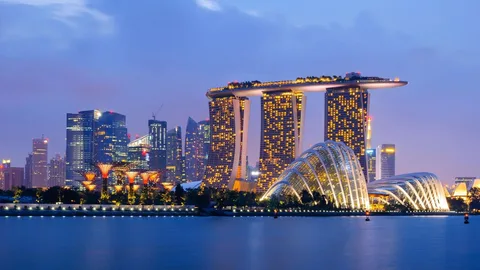
 Education6 months ago
Education6 months agoSingapore JC Ranking: A Complete Guide for Students
-
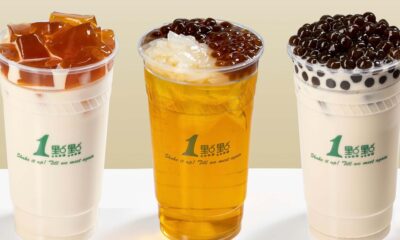
 Food2 months ago
Food2 months agoYi Dian Dian Bubble Tea Singapore: Menu, Outlets & Try Drinks
-
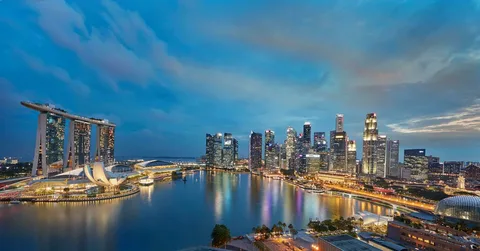
 Blog6 months ago
Blog6 months agoBest of SG with Singapore Rediscover Voucher
-
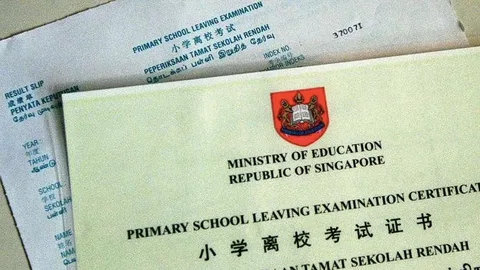
 Business6 months ago
Business6 months agoWhat to Expect During PSLE Marking Days 2023
-

 Digital Marketing3 months ago
Digital Marketing3 months agoHow to Run Effective Xiaohongshu Advertising Campaigns
-

 Digital Marketing3 months ago
Digital Marketing3 months agoWhy Xiaohongshu Ads Are a Must for Reaching Chinese Consumers




